
The Red Bridge is one of the bridges in the center of St. Petersburg.
The Red Bridge is one of the oldest in St. Petersburg - it has preserved its external historical appearance since the beginning of the 19th century.
The bridge spans the Moika River, and connects the Kazan and the 2nd Admiralty Islands. The bridge marks the border between the Admiralteysky and the Central Districts of St. Petersburg.
The name of the bridge "Red" comes from the color of its coloring-red, which was given to the bridge when the bridge was wooden (1808).
In addition to the Red, there are several colored bridges across the Moika in St. Petersburg and an interesting story is connected with them. Initially, there were four of them: Yellow (now Singing), Green, Blue and the Red Bridge itself. Since the bridges were of the same type and were located close to each other, it was difficult for residents to distinguish them and people often confused the bridges. For the convenience of orientation, it was decided to divide the bridges using color.

The Red Bridge is small. It has a total length of 33.6 meters and a width of 16.6 meters.
The bridge is a single-span metal structure consisting of seven double-hinged welded arches connected by a system of transverse beams and longitudinal ties. The facades of the superstructure are covered with decorative metal sheets. The abutments of the bridge are massive, stone, on a pile base, lined with granite.
Granite cone-shaped obelisks with four-sided lanterns on metal brackets and gilded balls are installed at the entrances to the bridge.
The railing of the bridge is a cast-iron lattice like the fence of the Moika River.
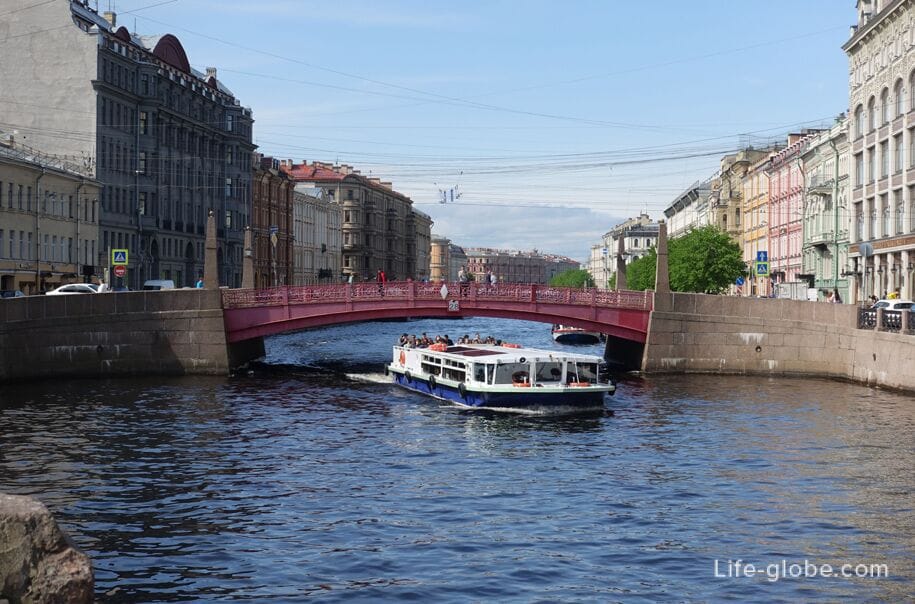
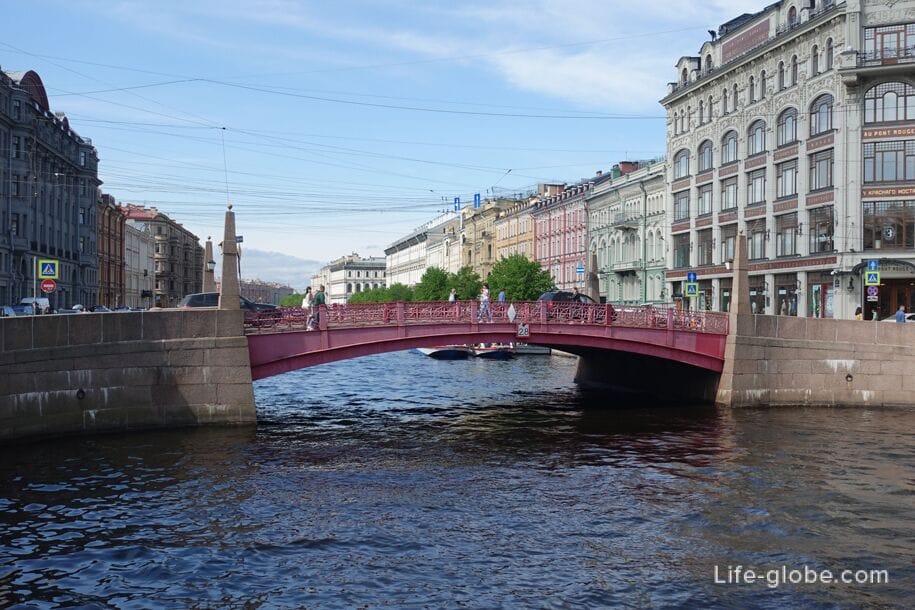
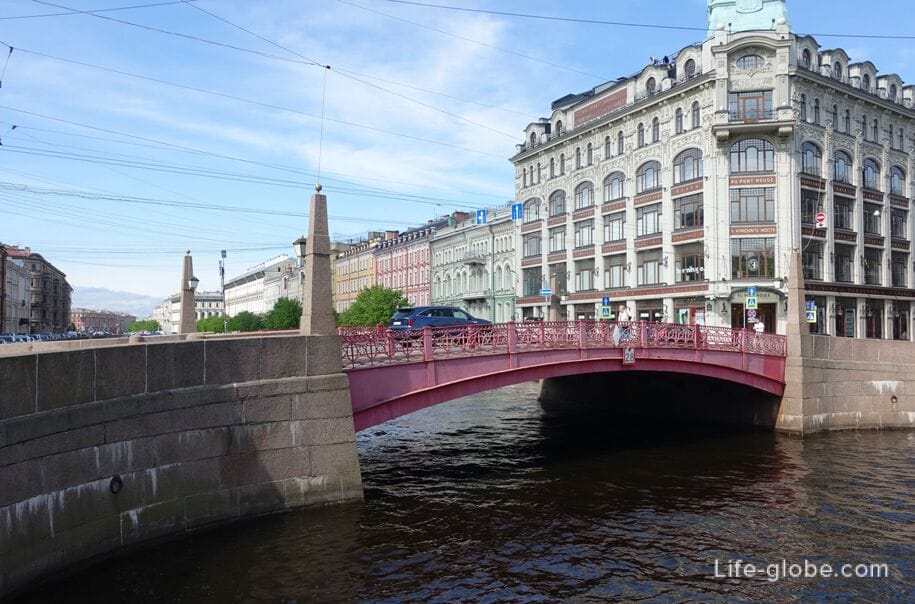
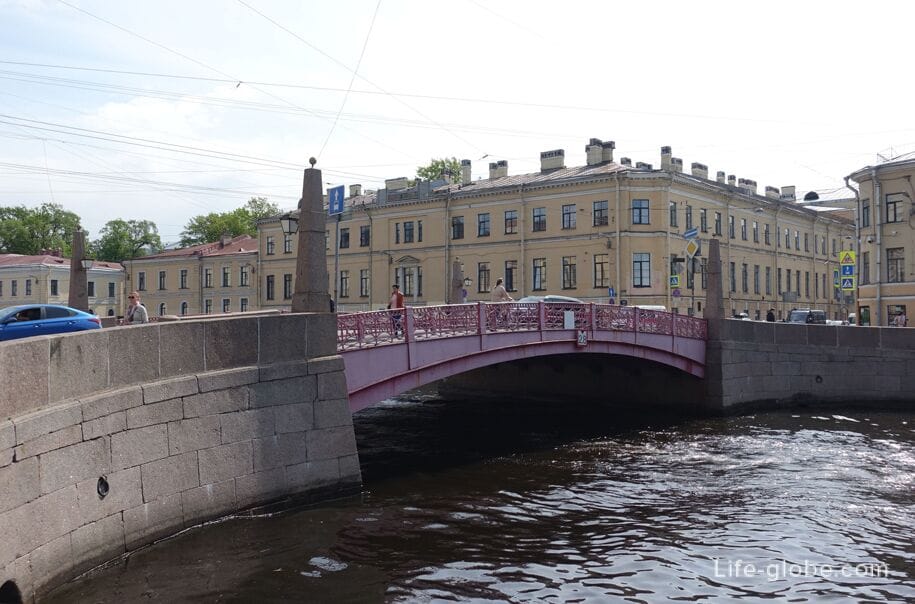
The Red Bridge is a roadway and pedestrian.
Pedestrian sidewalks are located on both sides of the bridge.
The roadway of the bridge is separated from the sidewalks by a simple metal fence with granite bollards.
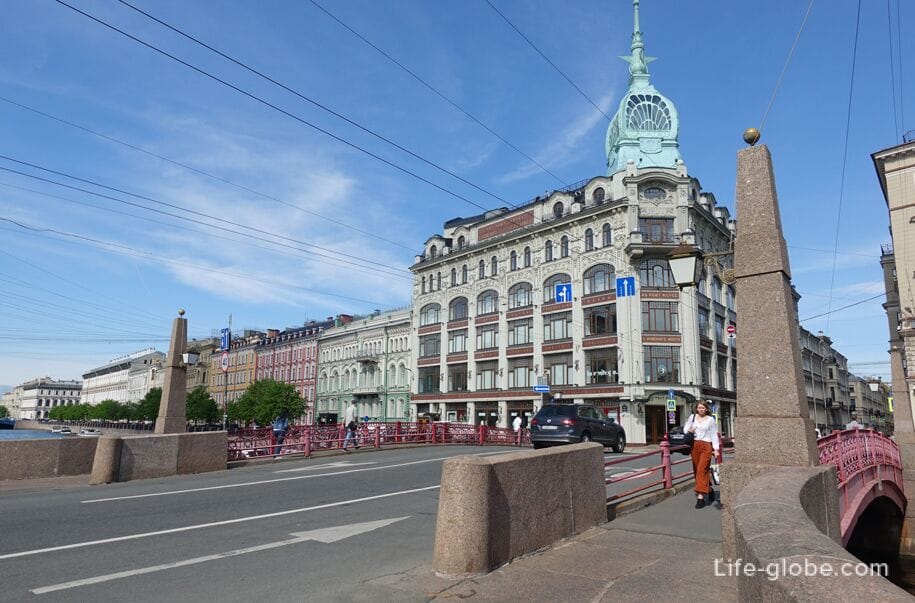
Near the bridge, at the intersection of the Moika River Embankment and Gorokhovaya Street, there is a five-story building with an attic, made in the Art Nouveau style and decorated with a dome-tower with a spire.
This is a historical Trading house " S. Esders and K. Scheifals", which was the first multi-storey store in Russia (built in 1906-1907), which was popular among rich residents and guests of the city, as well as with the Romanov family.
Today it is a shopping complex-a department store "At the Red Bridge" (Au Pont Rouge). Read more about the department store "At the red bridge"…
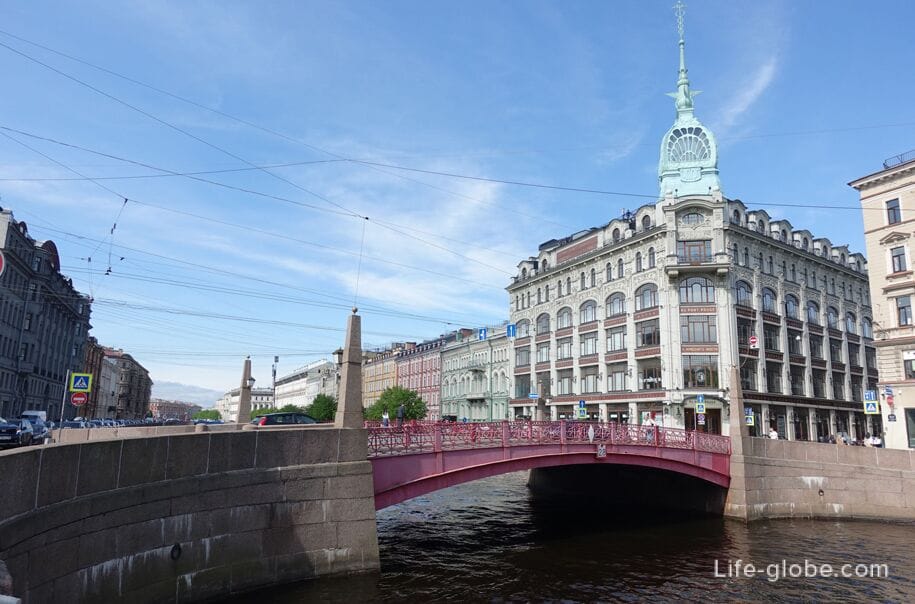
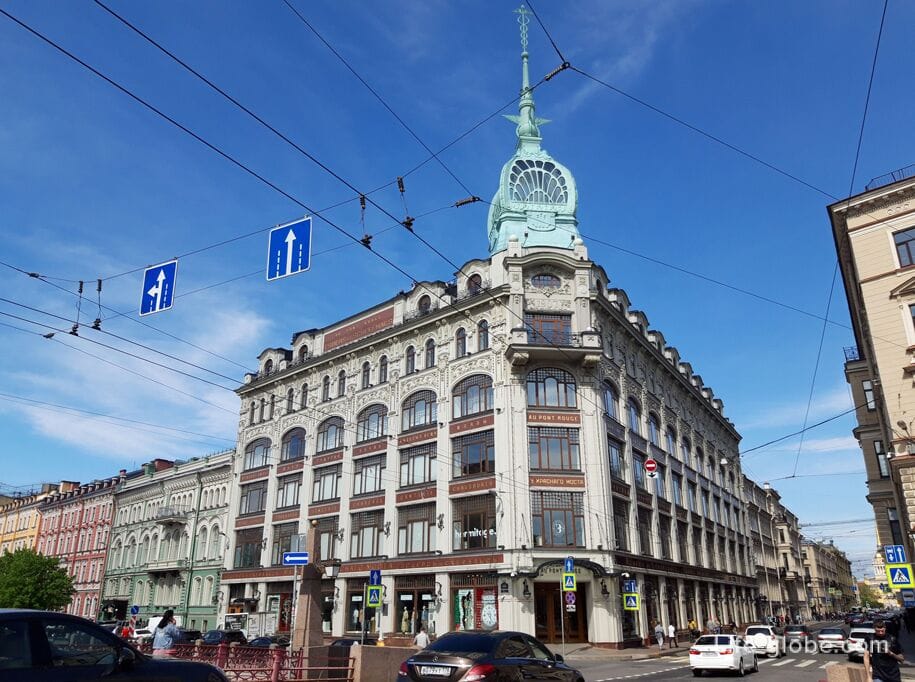
The Red Bridge offers beautiful views of the Moika River, including the river embankments, along which historical buildings stretch in dense rows.
Views towards the Green Bridge
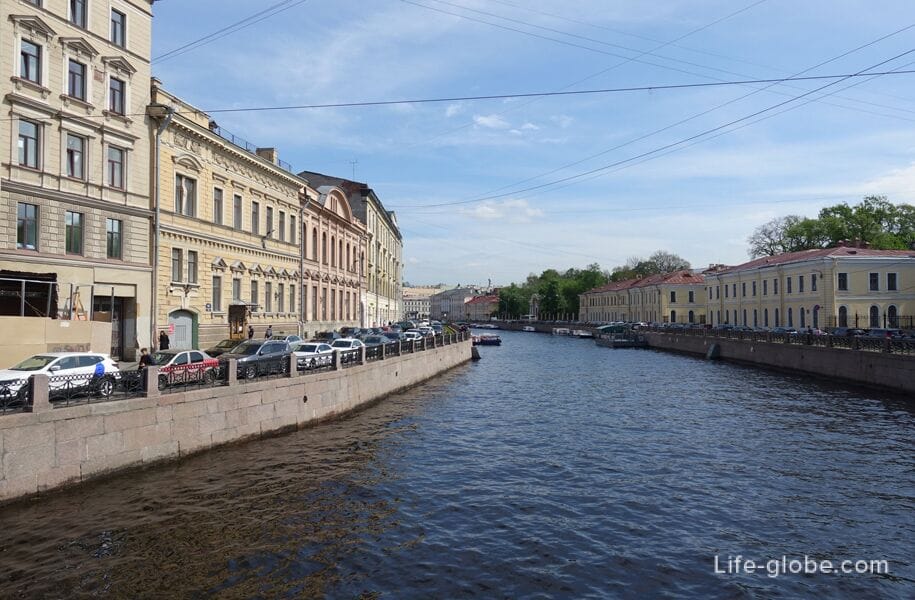

Views towards the Blue Bridge
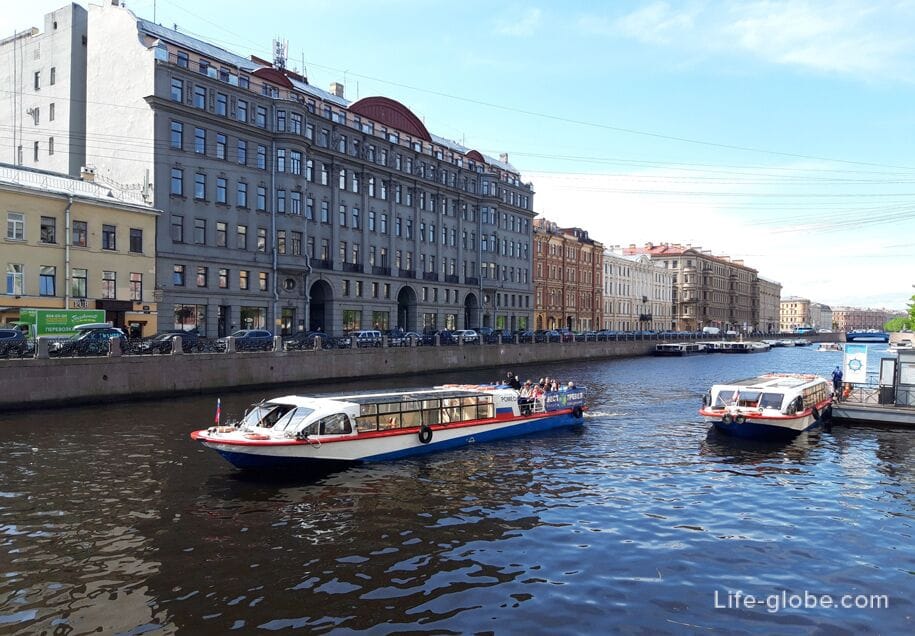
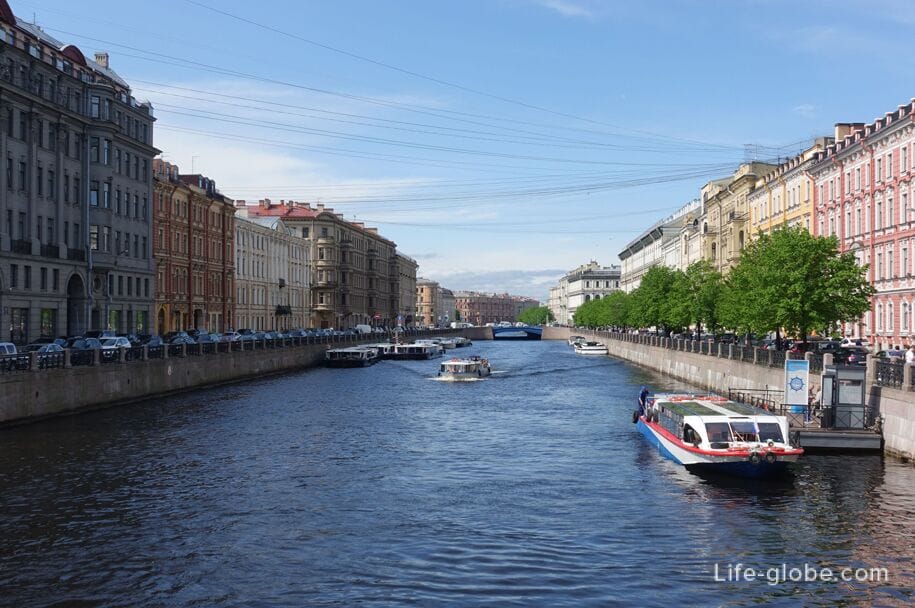
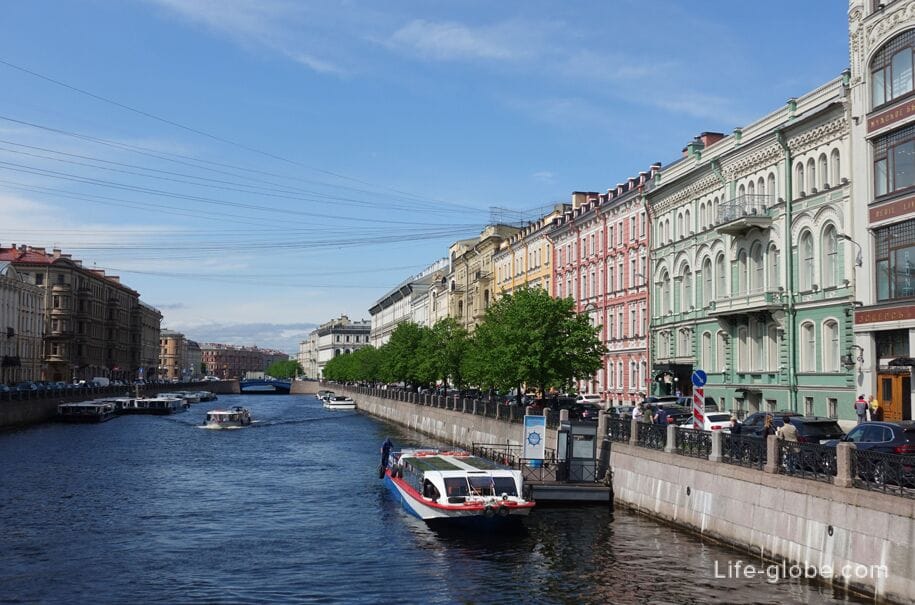
The first wooden bridge on this site was built in 1717. Then the bridge was a lifting bridge, for the passage of small ships with masts. Until 1808, the bridge was called White, and then, when it was changed its color, it became called Red.
At the end of the 18th century, the bridge was rebuilt into a three-span wooden one with the elimination of the lifting part.
In 1808-1814, according to the project of engineer and architect V. I. Geste, the wooden Red Bridge was rebuilt into a single-span, cast-iron, arched bridge. The cast-iron structures of the bridge were made at the Ural factories of N. N. Demidov.
Subsequently, the bridge was subjected to restorations and repairs, the paint was also updated, but the bridge did not lose its external historical appearance, as well as it did not lose its historical Red color.
Upstream of the Moika River from the Red Bridge is the Green Bridge, below-the Blue Bridge.
Coordinates of the Red Bridge: 59°55'58.0" N 30°18'54.0" E (59.932778, 30.315000).
Nearest metro stations: "Admiralteiskaya", "Nevsky Prospekt", "Gostiny Dvor", "Sennaya Ploshchad", "Sadovaya" and "Spasskaya".
All accommodation facilities in St. Petersburg, including in the city center and more remotely from it, can be viewed and booked here